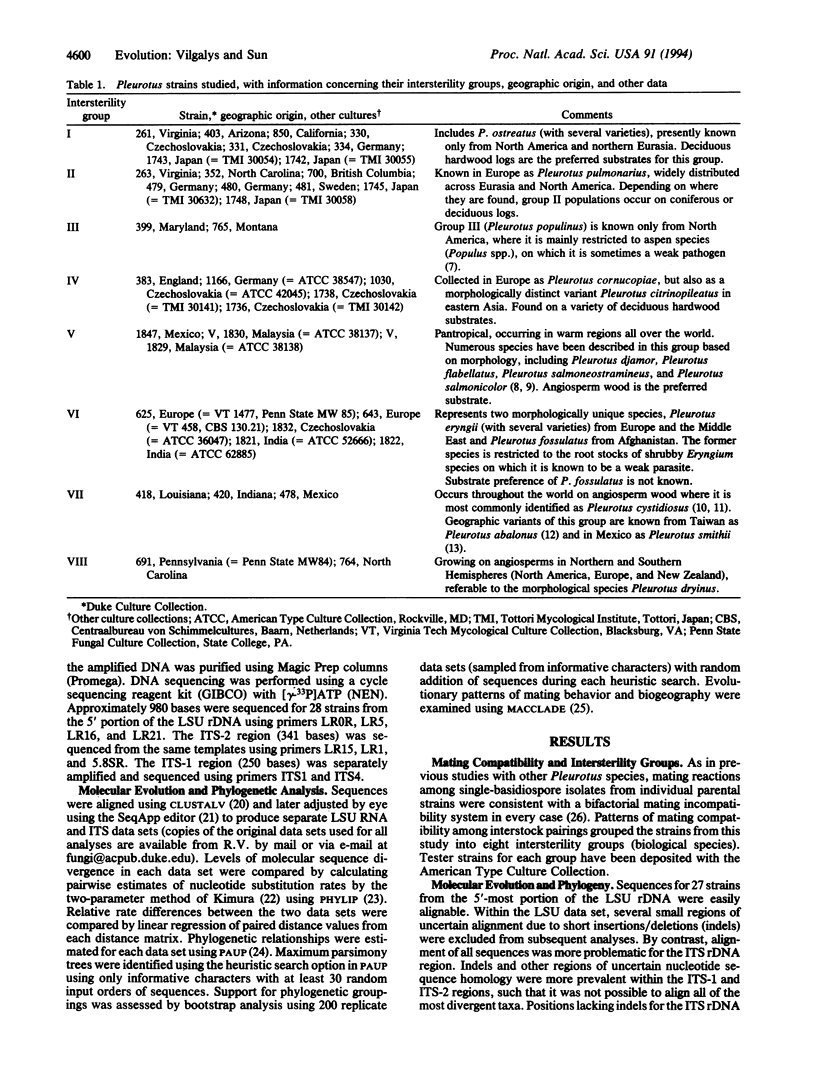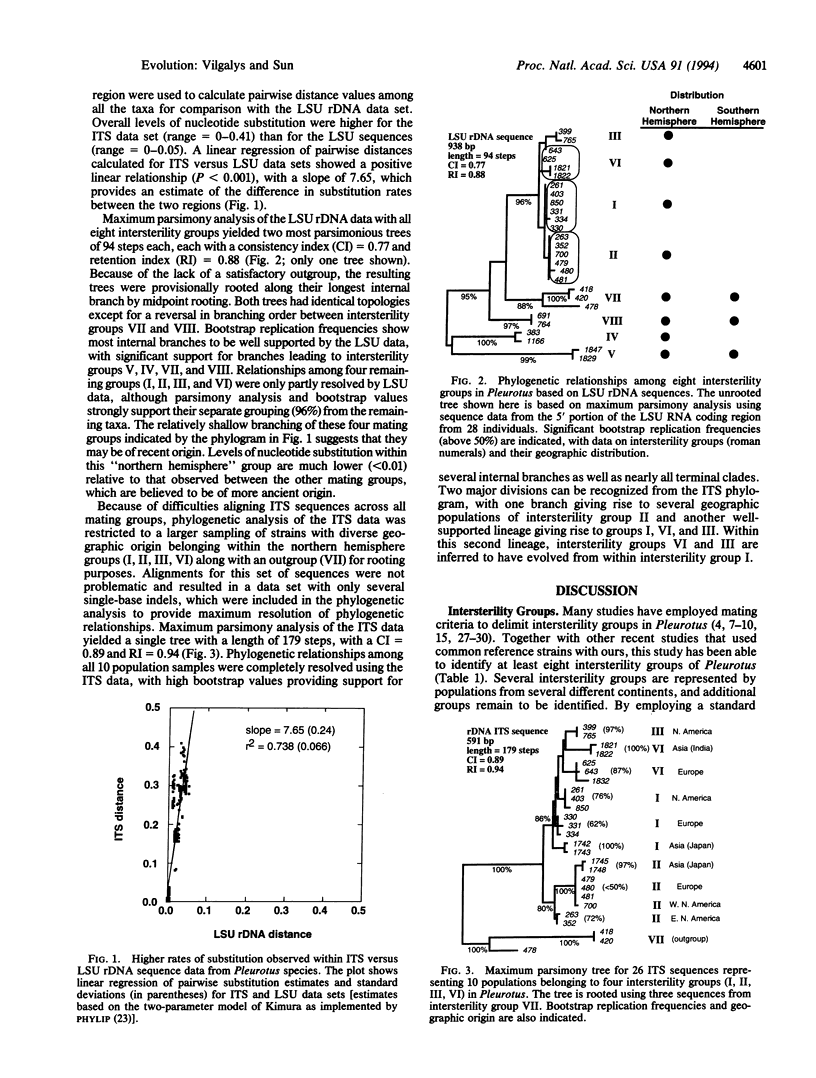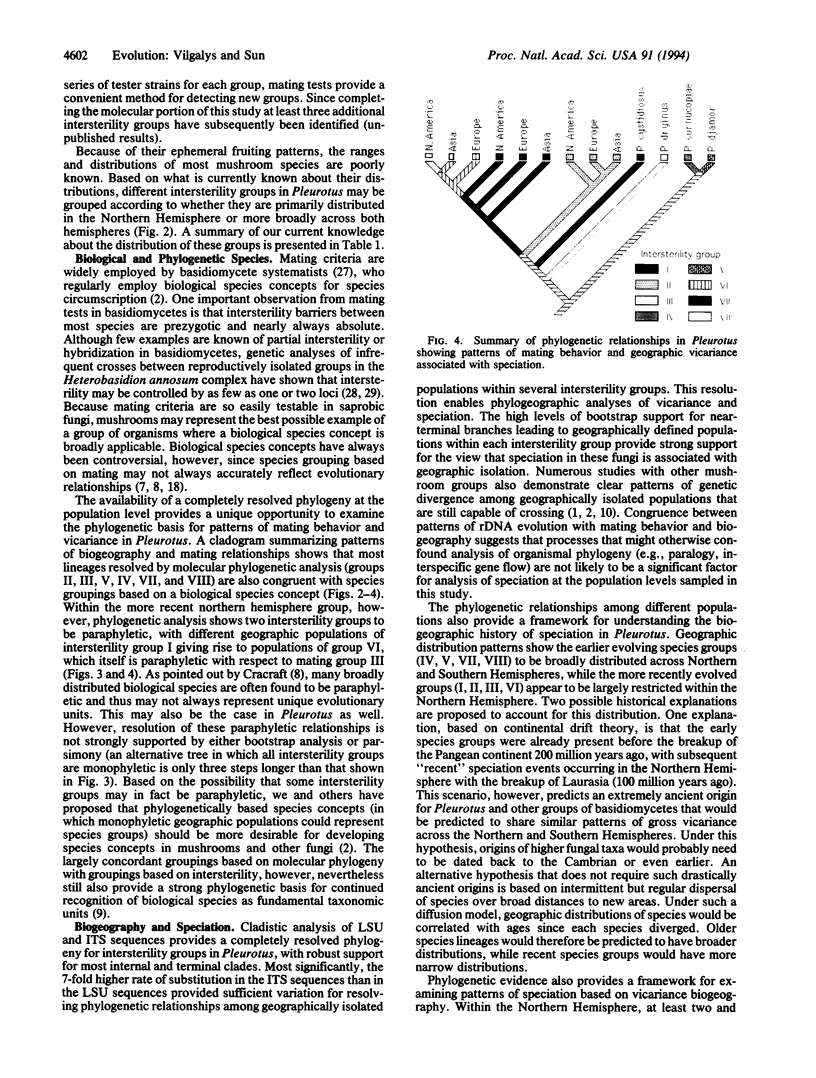Abstract
Evidence from molecular systematic studies suggests that many mushroom species may be quite ancient. Gene phylogenies were developed to examine the relationship between reproductive isolation, genetic divergence, and biogeography in oyster mushrooms (Pleurotus). Sequence data were obtained for two regions of DNA from populations belonging to eight intersterility groups (biological species). Phylogenetic analysis of sequences from the 5' portion of the nuclear encoded large subunit rDNA demonstrates an ancient origin for four intersterility groups of broad geographic distribution (world-wide), with a more recent radiation of several intersterility groups that are restricted to the Northern Hemisphere. An expanded analysis using sequence data from the more variable rDNA internal transcribed spacer region also reveals a phylogenetically based pattern of genetic divergence associated with allopatric speciation among populations from different continents in the Northern Hemisphere. The ability of rDNA sequences to resolve phylogenetic relationships among geographically isolated populations within intersterility groups illustrates the importance of biogeography for understanding speciation in Pleurotus. Patterns of geographic distribution among intersterility groups suggest that several species lineages evolved quite early, with recently evolved groups restricted to the Northern Hemisphere and older lineages occurring throughout the world. Based on phylogenetic evidence, analysis of historical biogeography using area cladograms shows that multiple dispersal and vicariance events are responsible for patterns of speciation observed.
Full text
PDF




Images in this article
Selected References
These references are in PubMed. This may not be the complete list of references from this article.
- Higgins D. G., Sharp P. M. Fast and sensitive multiple sequence alignments on a microcomputer. Comput Appl Biosci. 1989 Apr;5(2):151–153. doi: 10.1093/bioinformatics/5.2.151. [DOI] [PubMed] [Google Scholar]
- Kimura M. A simple method for estimating evolutionary rates of base substitutions through comparative studies of nucleotide sequences. J Mol Evol. 1980 Dec;16(2):111–120. doi: 10.1007/BF01731581. [DOI] [PubMed] [Google Scholar]
- Vilgalys R. J., Johnson J. L. Extensive genetic divergence associated with speciation in filamentous fungi. Proc Natl Acad Sci U S A. 1987 Apr;84(8):2355–2358. doi: 10.1073/pnas.84.8.2355. [DOI] [PMC free article] [PubMed] [Google Scholar]
- Vilgalys R., Hester M. Rapid genetic identification and mapping of enzymatically amplified ribosomal DNA from several Cryptococcus species. J Bacteriol. 1990 Aug;172(8):4238–4246. doi: 10.1128/jb.172.8.4238-4246.1990. [DOI] [PMC free article] [PubMed] [Google Scholar]
- Zolan M. E., Pukkila P. J. Inheritance of DNA methylation in Coprinus cinereus. Mol Cell Biol. 1986 Jan;6(1):195–200. doi: 10.1128/mcb.6.1.195. [DOI] [PMC free article] [PubMed] [Google Scholar]



